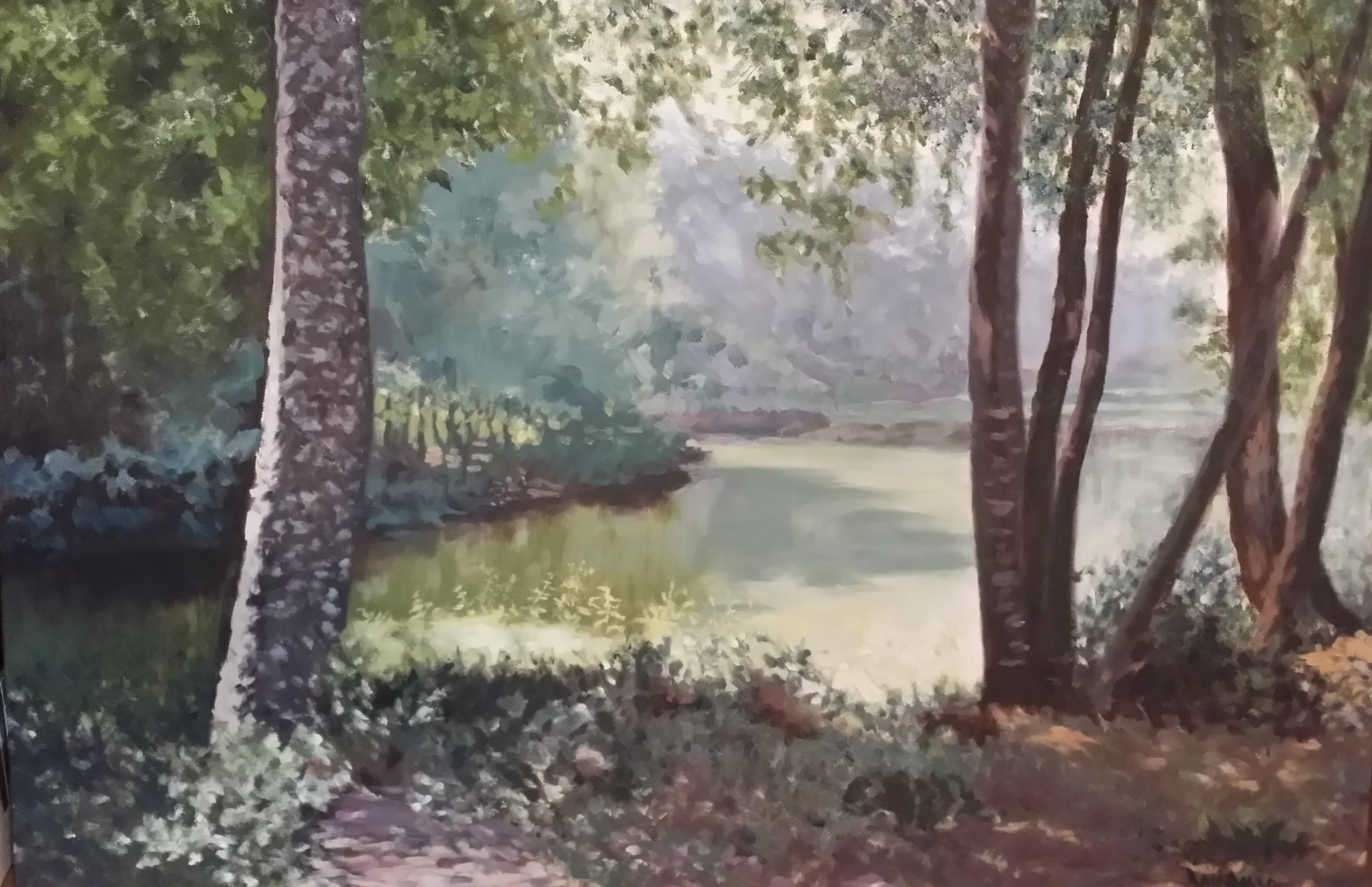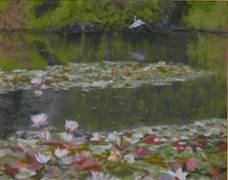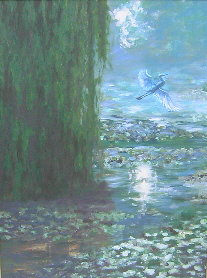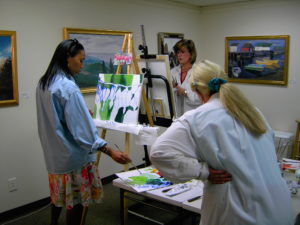

In my first lessons, I was fearful of not “drawing” things accurately with paint, which is how I interpreted what I was supposed to do. It took a few sessions and paintings for me to get over having to have the drawing right from the start, as the paint would keep covering it over and get blended back and forth over the pencil drawing I had carefully applied to the canvas, against my mentor’s direction. Eventually, I saw he was right and I didn’t have to be so worried about the drawing, just the general gridding of it with paint in the right places. Now I don’t even need to grid much but start with general shapes and values with the approximate colors in approximate places as a first layer of the painting.

All this to say I was very analytical and wanted to be right and good in my painting attempts. But I had to learn to let go. If I hadn’t had a little faith and trust, I would never have become loose enough in my painting style to see and understand the effect of colors and brush strokes to take the effort off painting and allow it to almost happen itself. As I did, it became much more fun, easier and I even found myself enjoying the “happy accidents” along the way. Even picking up a palette knife to put paint here and there on a canvas was at first a scary proposition. But the more I practiced and let the happy accidents show up to delight me (most of the time) and know how to fix the ones that didn’t with this very forgiving (fixable) medium, I started letting go and getting better results.
I still look at my first painting from time to time to remind myself of the difference between letting go to let color do its job and the painstaking way of trying to paint every tiny detail myself. Even as I attempted to paint the shape of every lily pad in the pond, I was being told to just put blobs of paint here and there in the right colors my teacher had mixed for me.

Maybe it was a little glass of white wine that day that helped me get giddy and silly enough to get out of my head and just “let her rip!” Not caring at that point as I gave myself permission to play, and having learned I could repaint those areas I didn’t like later, I just followed his instructions blindly. As I did so and stood back three feet, then 6 feet to look at the effect of the strokes I had just applied, I was amazed at how they really looked like lily pads with depth and dimension in spite of myself!
Perhaps it was left a little too “blobby” for my tastes – and maybe on purpose – but the point was made. This painting helped me move forward with more trust, confidence, joy, and freedom with this technique. (See “Morning Flight” to the left – the first painting with my mentor.)
Three to six feet away – that’s the proper viewing distance for looking at Impressionist paintings, he told me. That’s why it’s almost like a sword dance move when you are painting. You hold the end of the brush handle with the one hand so you are stretching to reach and just tickle the canvas with various colors, then step back and move the other foot an extra three feet or so back to see the effect you just created. It simply is amazing! Forward and back. Jab and tickle here and there, then lunge back to see the effect. It becomes a fun game and good exercise as well!
I’m always surprised and delighted when I complete a painting. It has so much more life and energy and light in it than any photograph could bring. And it has a bit of me infused in it as well. A piece of time and love I gave it as I enjoyed the process of art-making. Sounds a little like love-making, but it’s true, now that I think about it! 😉
I really do enjoy that loose style of painting and allowing the eye to mix the colors on the canvas from a further distance to create the picture you see. If you view a typical Impressionistic painting up close, it looks a little messy and chaotic, in my view. Therefore, I prefer to tidy up the edge a bit so it looks great from up close and from further away as well. That seems to be the compromise I generally like to make, depending on the subject matter.
Sometimes, though, you’ve just GOT to be “messy” up close to bring in the drama from a further away viewing that pulls you into the picture. Vive the art and soul of making art on your own terms!
To learn more about the difference in styles of painting, read Painting From Impressionistic To Representational To Realism.

